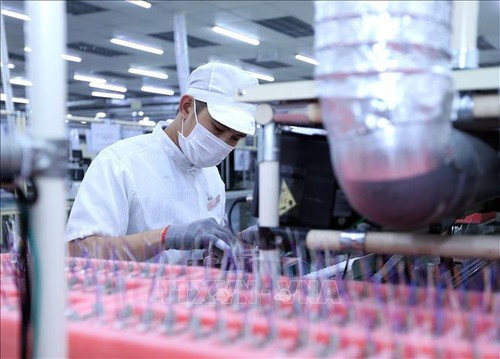 Production line at Nexcon Vietnam Company invested by South Korea in Bac Ninh.(Illustration: VNA) Production line at Nexcon Vietnam Company invested by South Korea in Bac Ninh.(Illustration: VNA) |
The author said low wages are a large reason why so many manufacturers have moved to Vietnam in the last decade. In addition, incorporating Vietnamese producers into supply chains is relatively straightforward both upstream and downstream. Unlike the ASEAN-4 nations (Indonesia, Malaysia, Thailand, and the Philippines), Vietnam shares a border with China, which makes it easier for manufacturing firms in Vietnam to integrate into China’s vast network.
Vietnam is party to 15 different free trade agreements that encompass more than 50 countries around the world. For manufacturers, this means that a product produced in Vietnam can be sold to other markets – including many wealthier western markets – without needing to pay prohibitively expensive tariffs along the way.
The author noted another reason why investors may lean more towards Vietnam rather than some of the ASEAN-4 nations is Vietnam’s relative security and political stability. According to the US Department of State’s 2021 Investment Climate Statements: Vietnam, the country's political and security environment is largely stable and protests and civil unrest are rare.